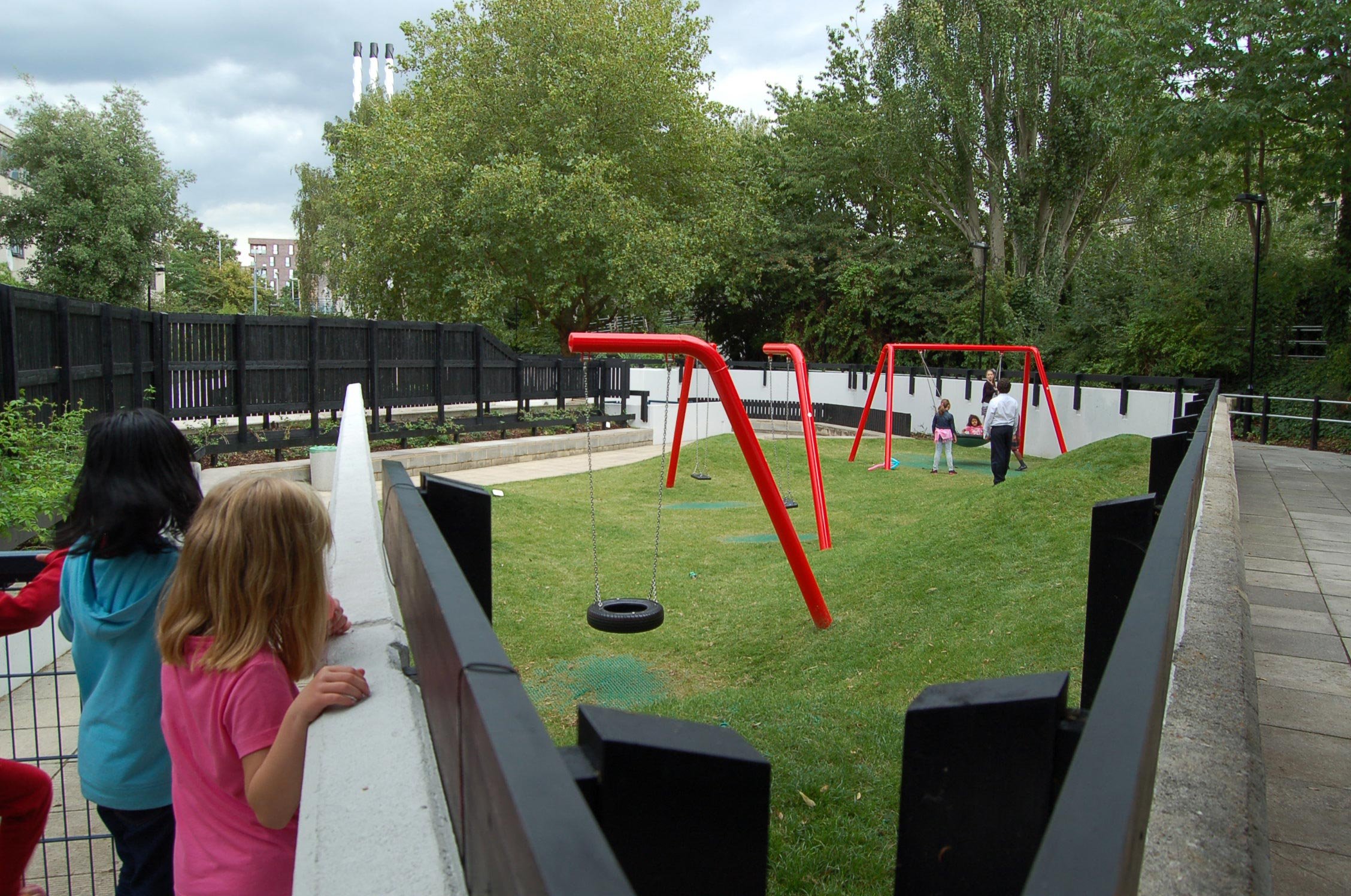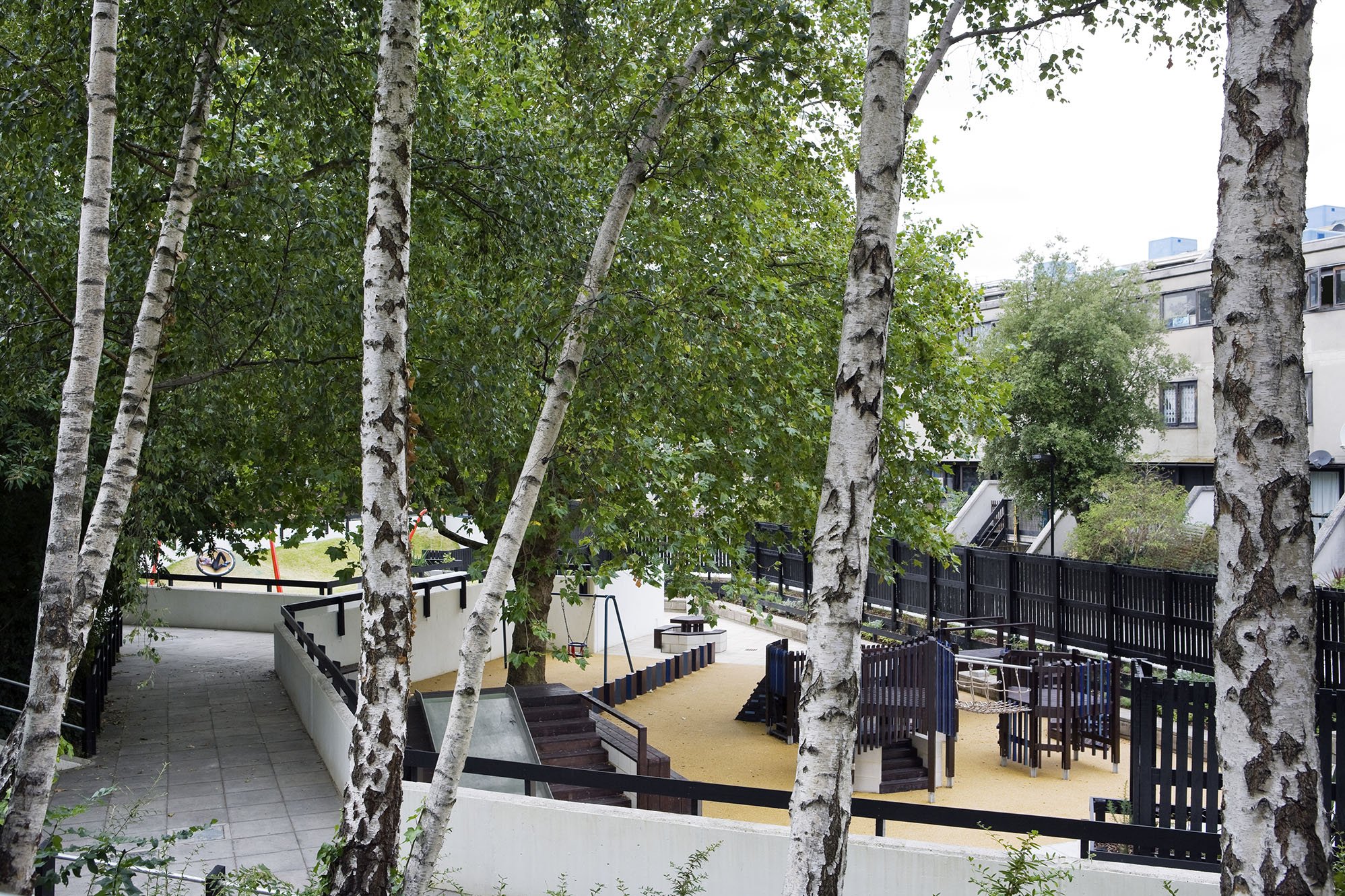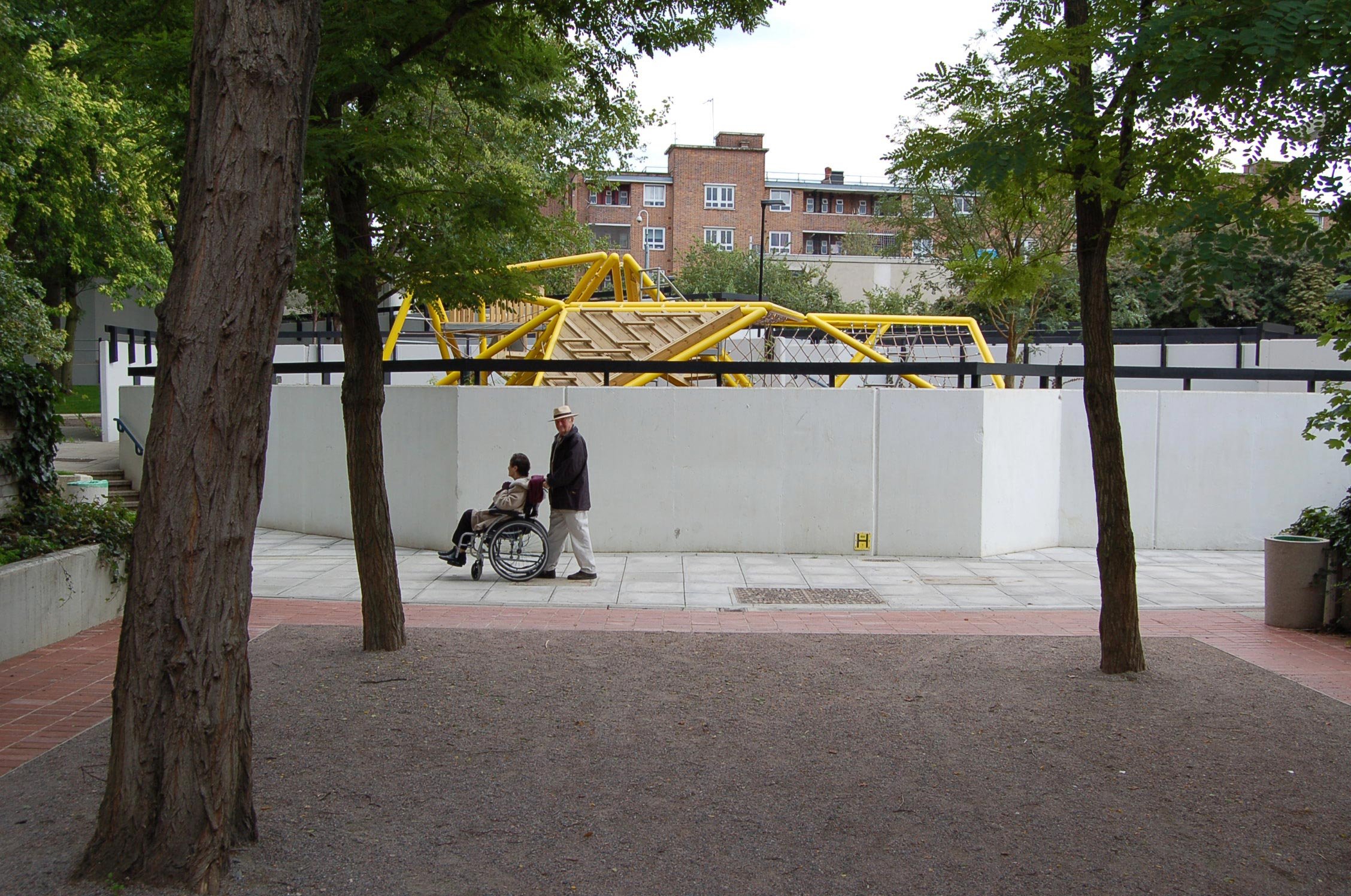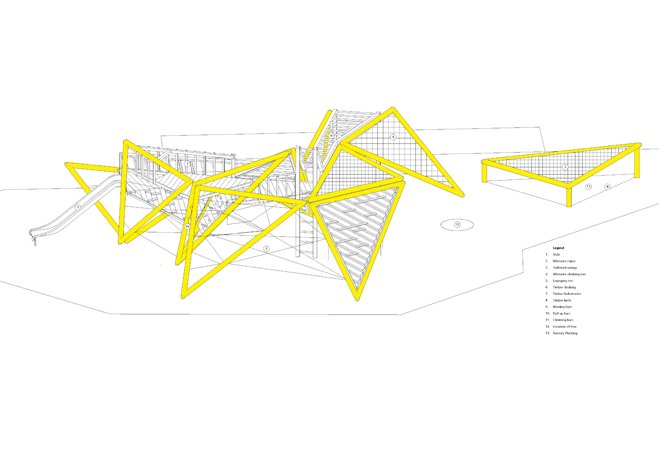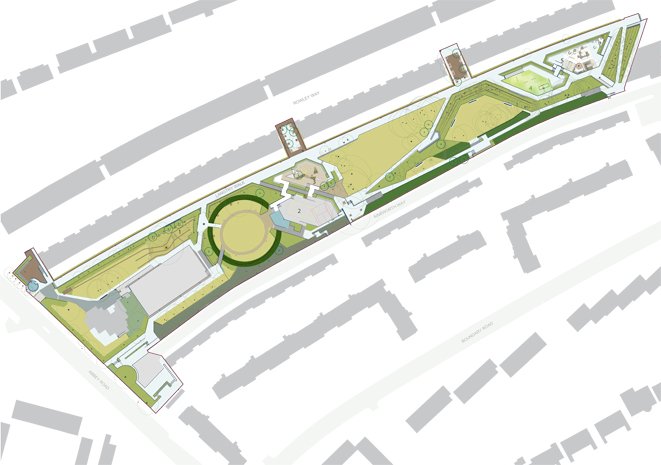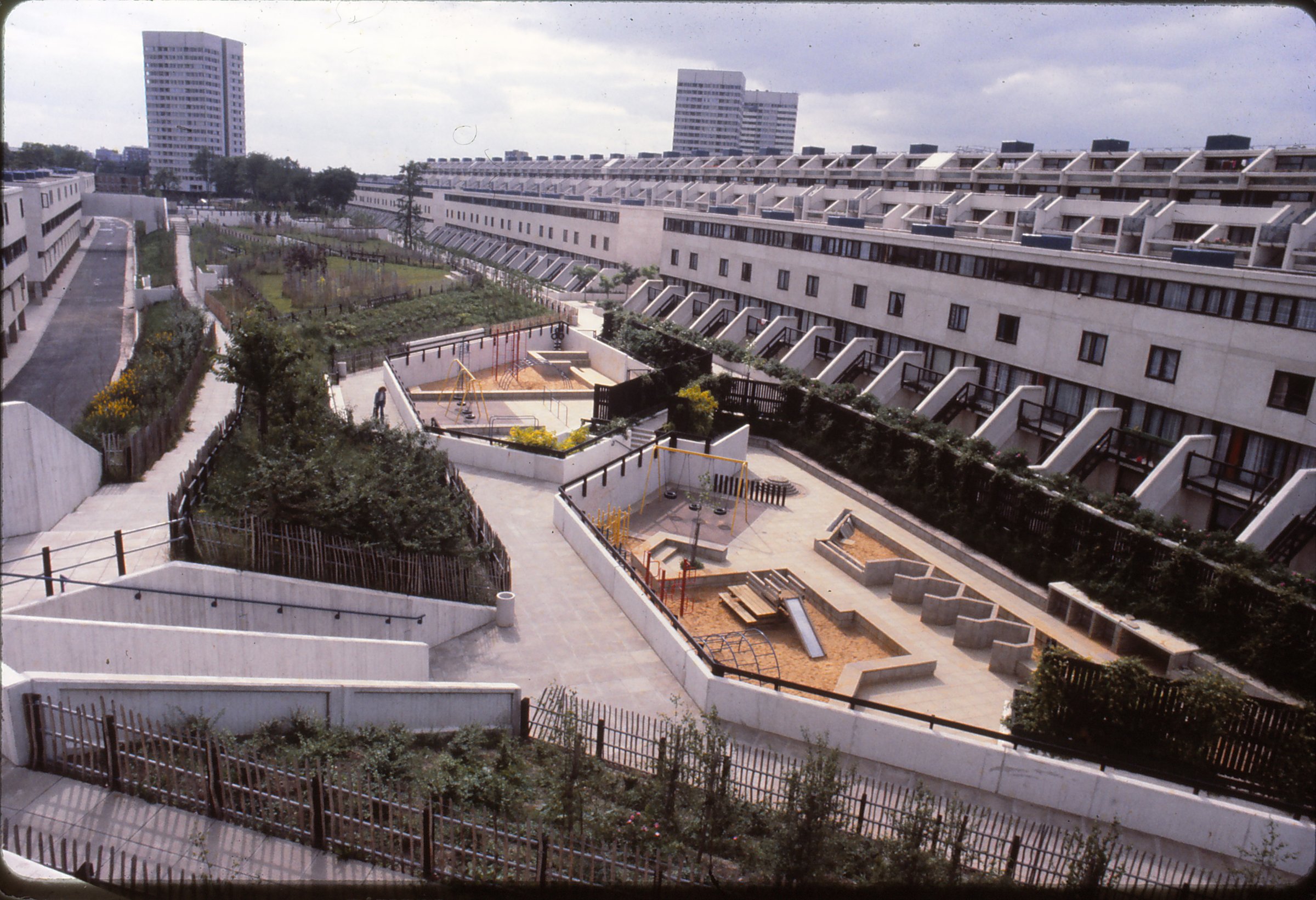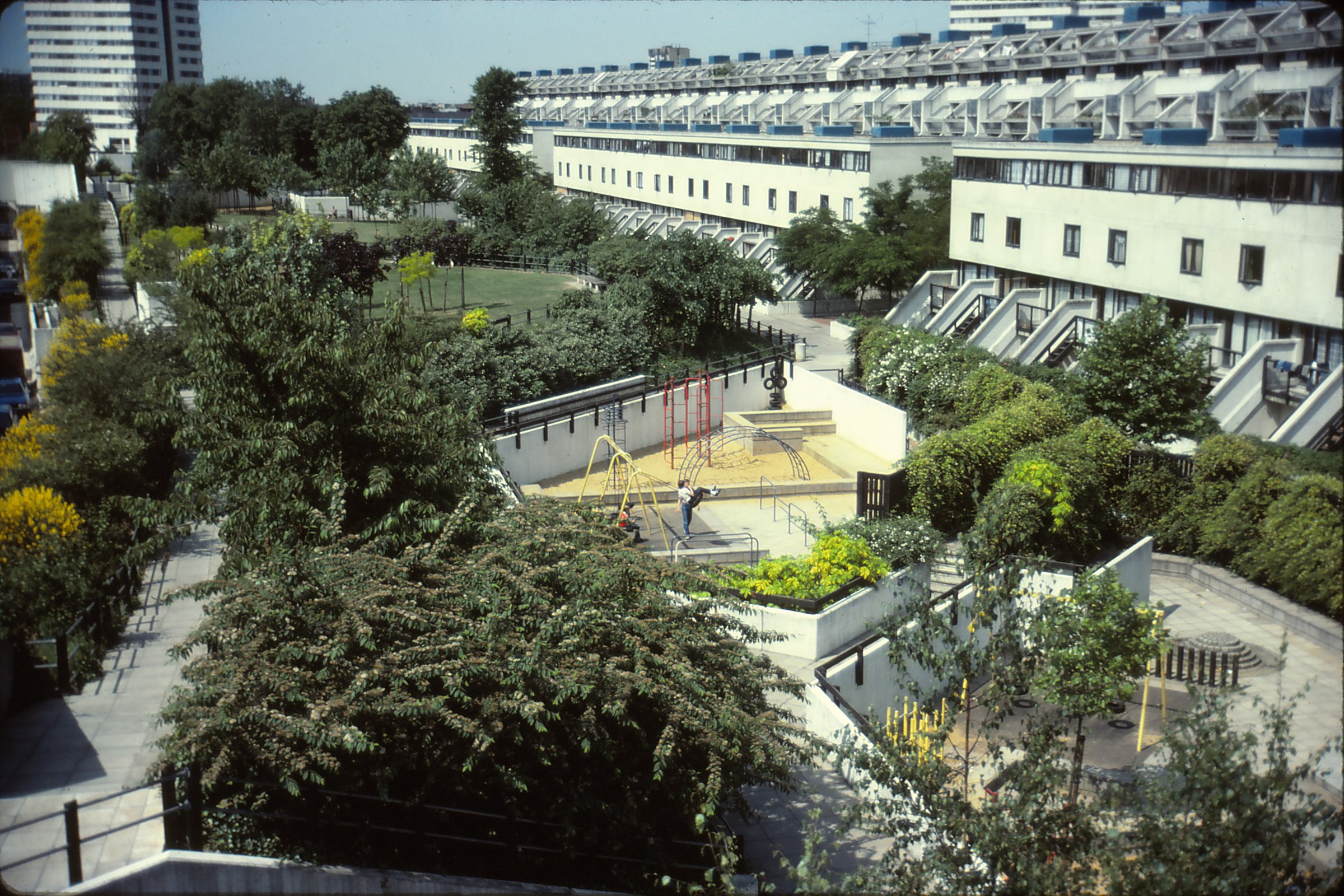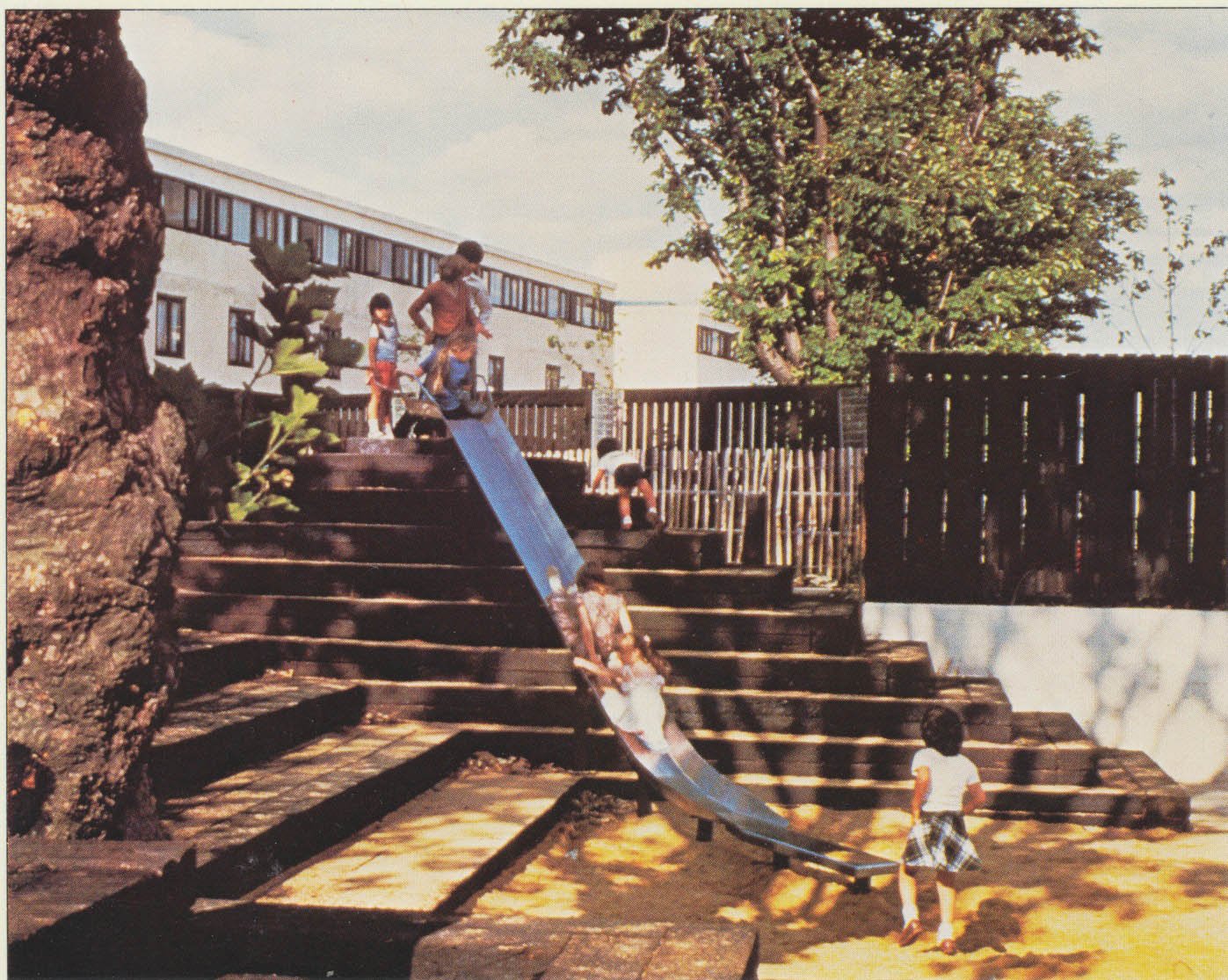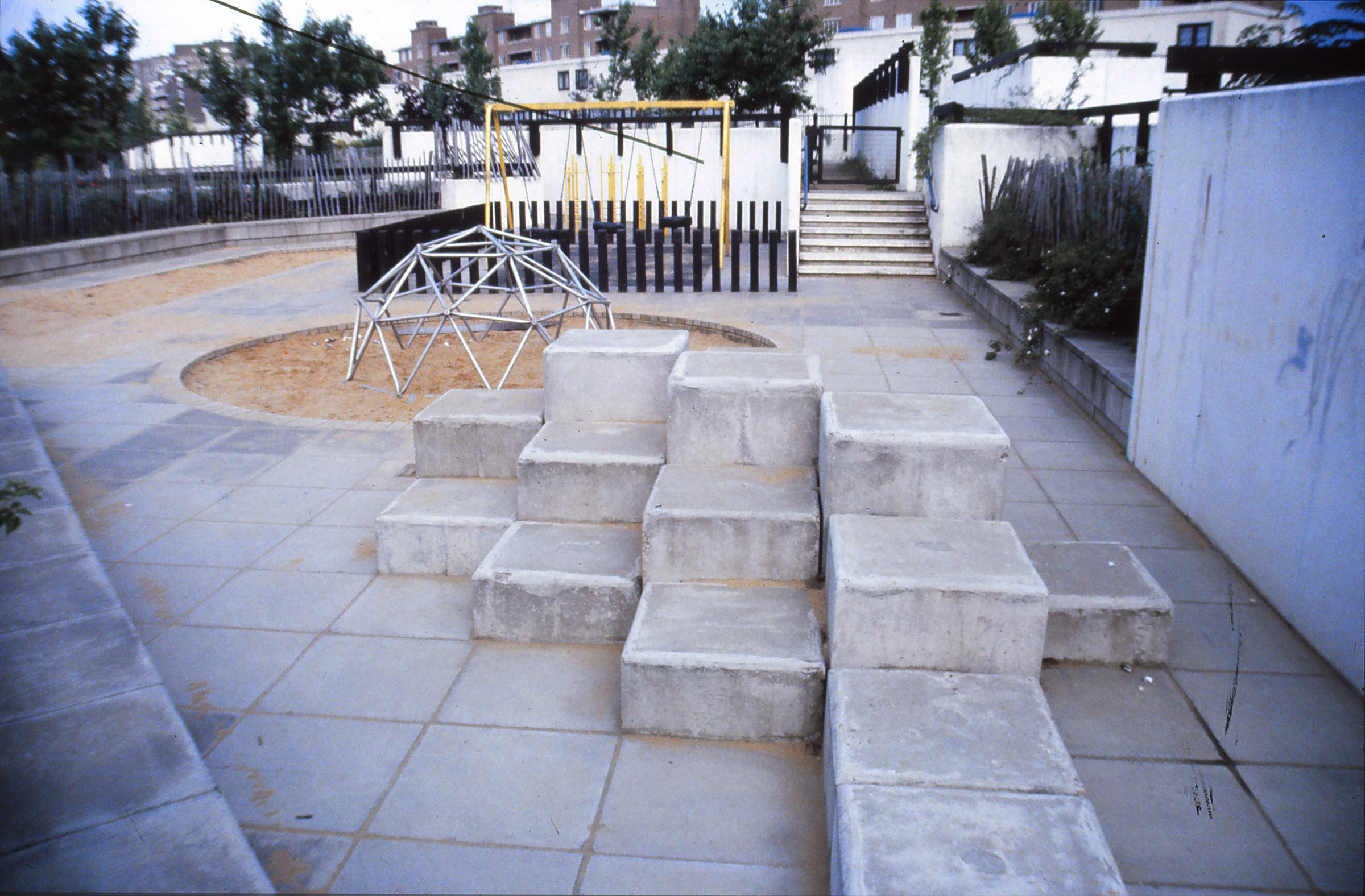Alexandra Road Park: four contemporary playgrounds reimagining the spirit of a listed 20th-century landscape
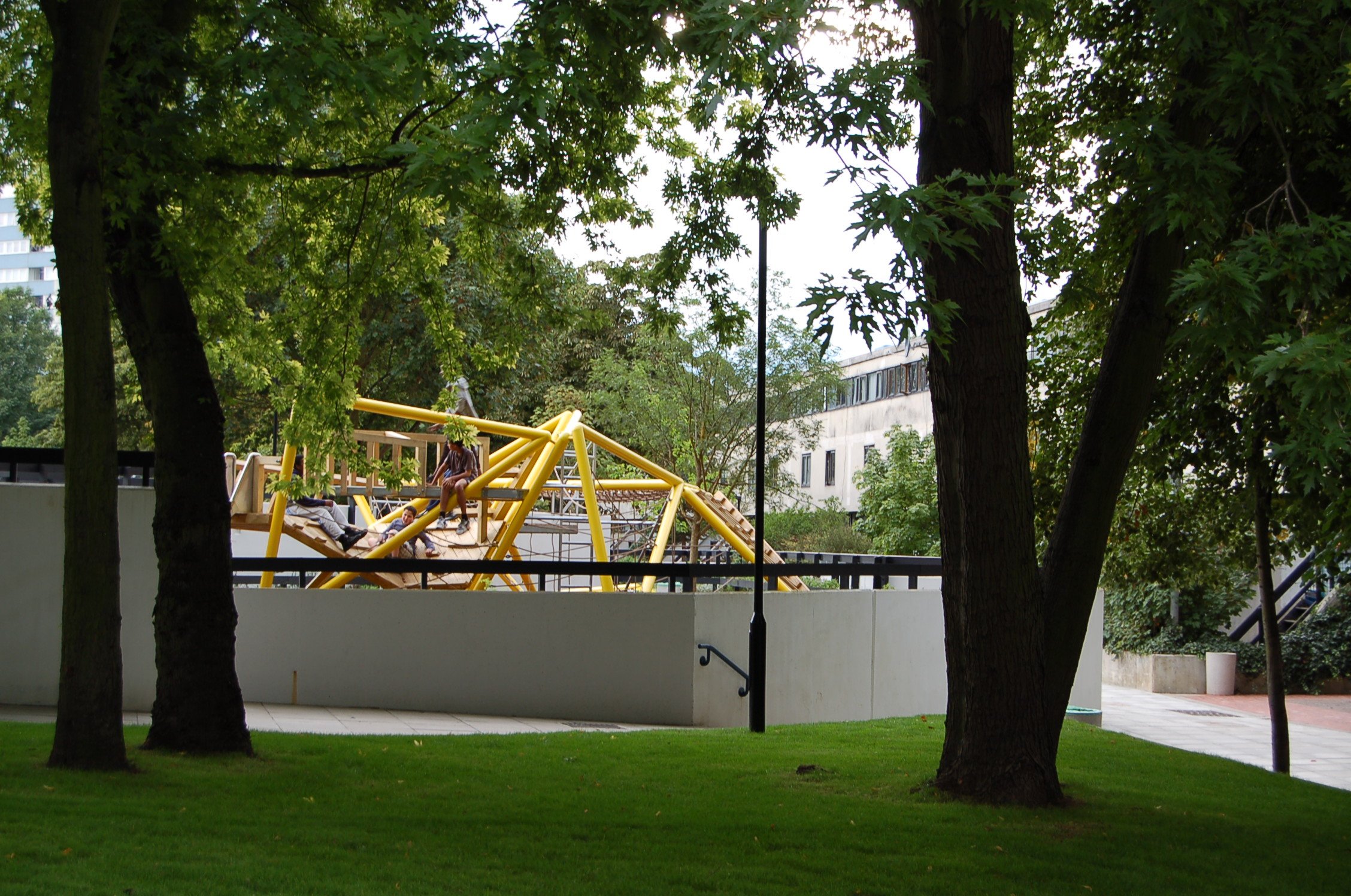
The Alexandra Road Park project presented a rare opportunity: to design new playgrounds within one of the UK’s most significant post-war landscapes. Originally completed in 1979 as part of the iconic Alexandra Road and Ainsworth Estates by architect Neave Brown and landscape architect Janet Jack, the park was the first 20th-century landscape to be officially listed. By 2012, however, the park had deteriorated - its five sunken ‘outdoor room’ play areas mostly stripped of equipment, paved over with black tarmac. Root And Erect’s task was to breathe new life into this historically rich environment while respecting its original design intent. Working closely with Janet Jack, we developed four new play spaces that reinterpret her modernist vision through a contemporary lens. We drew from the character of the original features while introducing bespoke elements that reflect current thinking around play, inclusivity and challenge.

Our approach to the new playgrounds sought not only to restore but to amplify the park’s potential as a communal and sensory-rich environment for children of all ages. Each play space offers a distinct experience, crafted to invite physical engagement, imaginative exploration, and social interaction. A standout feature is a vivid yellow climbing frame inspired by a deconstructed geodesic dome - an homage to Jack’s original designs - where nets, ropes, and monkey bars offer complex climbing challenges for older children. In the ‘swing room’, the sole surviving red swing has been joined by a diverse family of new swings nestled among rolling grass mounds. Throughout, we reinterpreted historic materials and structures - such as timber sleeper mounds and blockwork playhouses - with updated forms and textures, adding layers of risk and sensory play. The final sunken area has been transformed into a multi-use pitch for sports and games, providing flexible space for a wider community demographic. Leading the HLF funded restauration of the park, J&L Gibbons also strategically improved playability and connectivity throughout the park which added an informal play layer. All these interventions are more than just refurbishment - they represent a forward-thinking reactivation of a beloved urban landscape, fostering a renewed sense of ownership and use by the local community.
